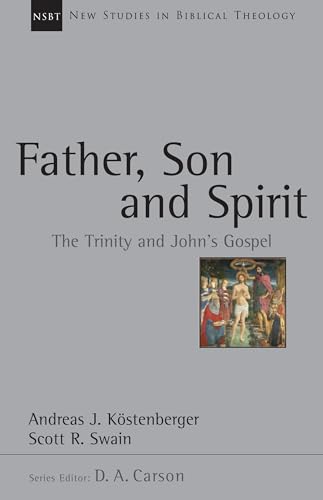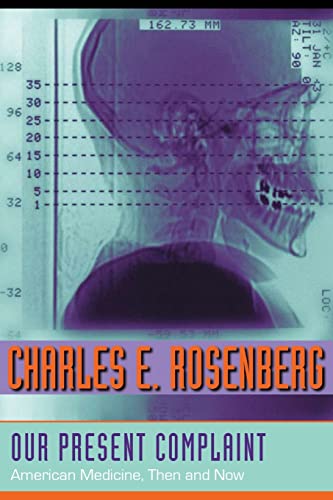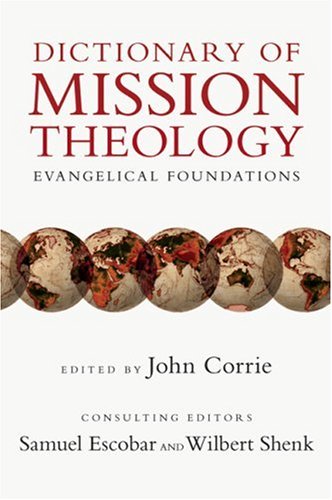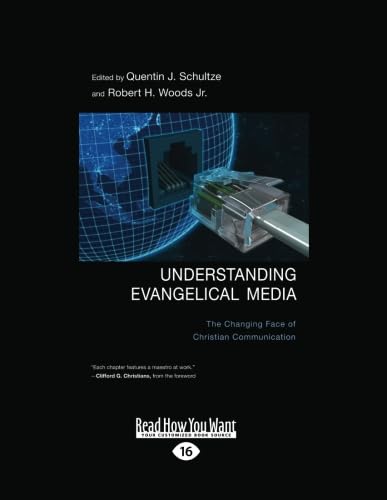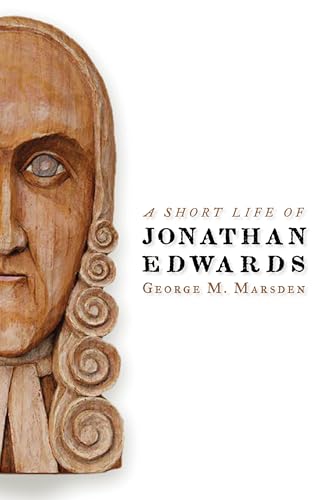Father, Son and Spirit: The Trinity and John’s Gospel
Written by Andreas J. Köstenberger and Scott R. Swain Reviewed By Philip R. GonsIn the midst of the Trinity debates in evangelicalism today, Father, Son and Spirit (FSS) is a welcome contribution that provides a solid biblical-theological study of one of the most important biblical books on the triune nature of the Godhead.
FSS proceeds in three sections: the historical context of John’s theology of the Trinity (chap. 1), the biblical data on the key trinitarian terminology (chaps. 2–6), and theological implications (chaps. 7–10). The following points summarize the main contours of each chapter.
- FSS relies heavily on Bauckham in affirming the historical reliability of John’s Gospel as eyewitness testimony, but—contra Bauckham—defends that the author was the apostle John. The notion of Jesus as θεός“did not violate … Jewish monotheism” (pp. 33, 37; but cf. p. 35, on which see below), though it did stretch its boundaries.
- As a character, θεός (in contrast to πατήρ), who appears most often in John 1–12, “remains in the background” and is the subject of comparatively few active terms (p. 59; cf. p. 47). John’s Gospel is not so much his telling the story of Jesus as it is Jesus’ telling the story of God.
- Very little attention has been given to the study of the Father in John’s Gospel. God’s Fatherhood is properly understood only when set within the context of Jewish patricentrism.
- Pervading the Gospel in its absolute and combination forms, υἱός is at the heart of John’s Christology—most notably with Jesus using the term of Himself.
- The Spirit comes to the fore once the Son’s return to the Father approaches. As another “helping presence,” He continues—and advances—Jesus’ presence with the disciples by reminding, testifying, convicting, and guiding and “fulfils similar roles in believers today” (p. 98).
- John presents the relationships among Father, Son, and Spirit in “a clearly defined relational as well as salvation-historical framework,” within which they exist in perfect unity while maintaining “distinctions of person and role” (pp. 105–6).
- John’s Christology finds proper explication only in trinitarian terms. The father-son relationship, where both equality and taxis (order) exist in harmony, provides the only sure means of reconciling Jesus’ equality with and His dependence upon the Father. While “the Father enjoys personal priority in the taxis of the triune life,” all three persons share equally the divine essence (p. 123). Only the Son was fit to be the God-man in order to fulfill the role of “Servant of Yahweh” (p. 126).
- The Spirit relates to Jesus’ followers similarly to how He related to Jesus. The Father sends the Spirit, who rests and remains upon the Son, and then, through the Son, rests and remains upon Jesus’ disciples. This analogous relationship is the result of Jesus’ brothers having a share in His filial relationship with the Father.
- John’s missiology is not a function of his trinitarian theology; to the contrary, “John’s presentation of Father, Son and Spirit is a function of his mission theology” (p. 149). The church must conceive of and fulfill its mission in a trinitarian way.
- John 17 summarizes John’s trinitarianism, though the Spirit’s presence is implicit rather than explicit. The Triune God reveals Himself as He is ad intra. Otherwise, God’s mission of self-revelation must be considered a failure. How the persons relate in the economic Trinity parallels how they relate in the immanent Trinity.
FSS repeatedly engages the egalitarian trinitarianism of Kevin Giles, et al. and responds to its misrepresentations (pp. 52, 71, 88, 90, 92, 105–7, 118–26, 172–73). Subordination is eternal, unidirectional, and irreversible. It is both functional and personal, but never ontological.
FSS has much to commend it. It is thorough, organized, Bible-saturated, up-to-date, and generally lucid and compelling.
Nonetheless, FSS has several weaknesses.
- Inaccuracies: FSS is dedicated “to the triune God” using Eph 1:14’s “to the praise of his glory” (p. 5). Yet in the context, this passage almost certainly refers to the Father. FSS avers that there are 41 occurrences of Jesus as Son and, if the four occurrences of μονογενής are included, then 45. However, in two of those occurrences (3:16, 18), μονογενής is modifying υἱός so that both terms cannot be counted. The total would be 43.
- Inconsistencies: It is not entirely clear how the authors would harmonize these two statements: “Neither John nor the other NT writers evidence any consciousness of tension between the attribution of deity to Jesus and their Jewish monotheistic beliefs” (p. 37) and “Any claims to deity by an individual such as Jesus would have been fiercely opposed by pious first-century Jews” (p. 35). Perhaps the simple answer is Matt 16:17, but they do not suggest a resolution. FSS also argues that John 3 is “probably not [referring] to the person of the Holy Spirit” but to “spiritual … birth” (p. 94), but then uses 3:5, 6, 8 as the primary passage on “the Spirit’s role in regeneration” (p. 96). Finally, though the chapter on mission was one of the best, it departs—without explanation—from the other chapters by broadening the scope to include John’s letters.
- Vagueness: Several of the ten tables are not illuminating and even confusing.
- Typos: A handful of errors were missed: “ironing sharpening iron” (p. 13), missing comma (p. 21), missing author (James D. G. Dunn, p. 196), and capitalization errors (pp. 191, 204, 205).
- Omission: The absence of a subject index reduces its value for quick reference.
In spite of its several minor shortcomings, FSS fills an important gap in the intersection of Johannine and trinitarian studies and deserves wide readership.
Philip R. Gons
Bob Jones University Seminary
Greenville, South Carolina, USA
Other Articles in this Issue
For Ezra had set his heart to study the Law of the LORD, and to do it and to teach his statutes and rules in Israel (Ezra 7:10)...
Salvation History, Chronology, and Crisis: A Problem with Inclusivist Theology of Religions, Part 2
by Adam SparksA fundamental requirement in an inclusivist understanding of the relationship between Christianity and other religions is evidence of God's salvific activity outside of any knowledge of Christ...
The Center of Biblical Theology in Acts: Deliverance and Damnation Display the Divine
by James M. Hamilton Jr.Acts 1:1 opens with a reference to what Jesus "began to do and teach"1 recounted in the Gospel of Luke, indicating that this second volume will carry the narrative of Jesus' actions and teachings forward...
Shared Intentions? Reflections on Inspiration and Interpretation in Light of Scripture’s Dual Authorship
by Jared ComptonIt was not too long ago that Kevin Vanhoozer answered the question Is There a Meaning in This Text? by relocating meaning in authorial intention,1 doing so even more robustly (not to mention, evangelically) than E...
The original question I was asked to address was "How does our commitment to the primacy of the gospel tie into our obligation to do good to all, especially those of the household of faith, to serve as salt and light in the world, to do good to the city?" I will divide this question into two parts: (1) If we are committed to the primacy of the gospel, does the gospel itself serve as the basis and motivation for ministry to the poor? (2) If so, how then does that ministry relate to the proclamation of the gospel?


